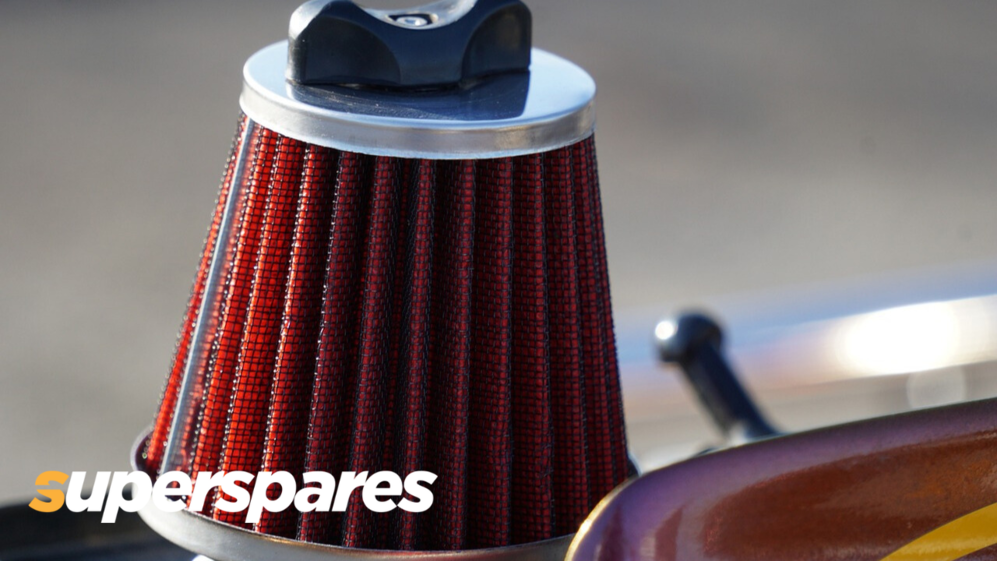Air Filters Buying Guide
Author: superspares

The importance of air filters
Modern air filters block up to 98 percent of dust, pollen and other contaminants to keep your engine healthy. A high-quality air filter can grab dust particles down to 5.5 microns in diameter – compared to about 50 microns for the average human hair.
If the car's air filter isn't doing its job, then dirt can enter the engine and make its way into the oil supply over time. This can wreak havoc on expensive internal components of the engine, such as the valves and valve seats, piston rings and cylinder walls.
Even before causing expensive damage, a dirty air filter can reduce the airflow into the engine, robbing your vehicle of power, reducing performance and fuel economy. That's why some racecars run without any air filter; they'd rather risk damage to the engine than risk reducing horsepower and throttle response from constricted airflow through a dirty filter.
Engine air filter design and maintenance
Air filters are typically made of a paper-like fiber with accordion pleats to increase the surface area. However, there are also foam filters on the market, and lifetime filters sometimes use oil-soaked cotton fibers. In many older domestic cars, the air filter was shaped like a ring and mounted on top of the engine. Inspecting and changing the filter was easy because the air filter cover was held on with one wing nut. Today, the air filter in most cars is usually a rectangular cartridge sealed in a plastic box that's part of a sophisticated air intake system. Still, replacing an air filter can be relatively easy, requiring you to only remove a few screws or clips.
Filter manufacturers recommend replacing an air filter every 12,000 miles, but you should also check your vehicle's owner's manual for the manufacturer's guidelines. Keep in mind that more demanding driving conditions – such as idling in heavy traffic, driving on dusty roads or towing heavy loads – can put a strain on engines, so you may need to change the filter sooner than recommended.
When to Replace Air Filters
A sign that your filter needs to be replaced is a noticeable reduction in air flow when using the heat or A/C. Another sign is the presence of bad odors when using these systems. However, if you have kids, it may be difficult to discern this from the usual bad odors, so if you aren't sure when it was last replaced it's a good idea to get that done. You should also be able to get an idea of whether or not it needs to be changed by simply looking at the filter. If you're able to see that dirt, dust, leaves or bugs that have built up, it's probably a good idea to replace the filter. If it's as sparkling white as freshly fallen snow, let it be.
How to Change Your Air Filter
1.Open your hood and locate the air filter box.
It's the black plastic box sitting on top of or to the side of your engine. The filter box usually has a giant hose sticking out of its side.
2.Open the air filter box and remove the dirty air filter.
Opening an air filter box is a cinch. Just unclasp the big metal clips that hold the top down and open the box. Remove the dirty filter.
3.Check the old air filter.
Give your old filter a look over to see if it's past its prime. Look inside the folds. See a lot of dirt and gunk? Time to replace it.
4.Put in the new air filter.
Place your filter in the filter box. Make sure it sits snuggly in the box. Close the top of the box and snap the clips.
Conclusion
Replacing your cars air filter is a relatively straight forward job and you do not even need to get your hands dirty in most cases. The majority of air filters will require changing between 10,000 to 15,000 miles but there are premium alternatives that can run perfectly for much longer.
Premium examples will often use a high air flow cotton whereas cheaper alternatives will use an embossed paper to capture debris. For dusty areas, an oil media material is highly recommended as it will capture all the smaller particles present in the air.

.jpg)






